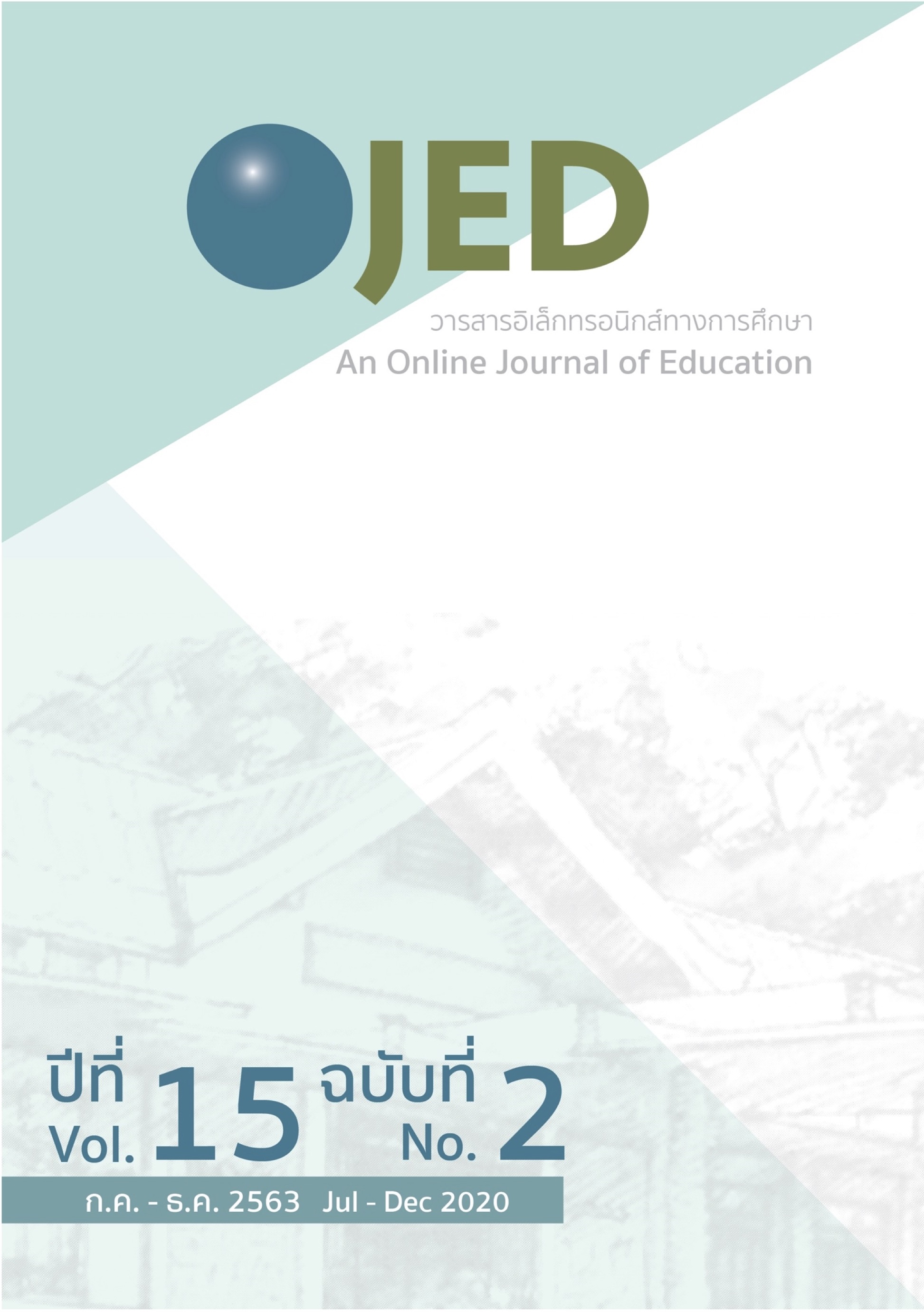The Package for Promoting Development of Children with Early Stage Cerebral Palsy
DOI:
https://doi.org/10.14456/ojed.2020.8Keywords:
development, package for promoting development, children with cerebral palsyAbstract
This research aims to develop and investigate the utilization appropriateness of a package for promoting development of children with early stage cerebral palsy. The population and samples in this study were parents and 0-6 year old children with cerebral palsy. There were 2 samples selected by purposive sampling from Regional Special Education Center 11, Nakhon Ratchasima. The research procedure applied the Borg & Gall theory, consisting of two steps: Step 1 – Creating and developing the package for promoting development of children with early stage cerebral palsy. Step 2 - Assessing the appropriateness of the developmental package and user satisfaction. The instrument used was interview recording form 5 level suitability assessment form. The Statistics used for the analysis were mean and standard deviation.
The research results were the package for promoting development of children with early stage cerebral palsy, which consists of a 4-step implementation process: preparation, creating understanding, practice and evaluation. The package materials consisted of a set of user’s manuals, a parent’s manual, activity plans, online learning materials, practice sheets and a bag for keeping the parent’s manual and materials. The utilization appropriateness of the manual and the package was assessed at the high level, with the mean as a whole measuring 3.80-4.80; the activity plans were also assessed at the high level, with the mean as a whole measuring 4.00-4.60, and parents’ satisfaction with the package at the high level as well, with the mean as a whole measuring 4.00-5.00
References
ชญานิษฐ์ อนันตวรวงศ์. (2551). ผลของโปรแกรมการบำบัดทางความคิดและพฤติกรรมต่อการลดความวิตกกังวลของผู้ดูแลเด็กสมองพิการ. สถาบันพัฒนาการเด็กราชนครินทร์ จังหวัดเชียงใหม่.
ณรรทอร พลชัย. (2556). ผลให้คำปรึกษารายบุคคลที่มีต่อความวิตกกังวลในผู้ดูแลเด็กสมองพิการ [วิทยานิพนธ์ปริญญามหาบัณฑิต, ไม่ได้ตีพิมพ์]. มหาวิทยาลัยขอนแก่น.
ล้วน สายยศ และอังคณา สายยศ. (2553). เทคนิคการวิจัยทางการศึกษา (พิมพ์ครั้งที่ 11). สุวีริยาสาส์น
วรรณี แกมเกตุ. (2555). วิธีวิทยาการวิจัยทางพฤติกรรมศาสตร์. จุฬาลงกรณ์มหาวิทยาลัย.
สมาคมเวชศาสตร์ฟื้นฟูแห่งประเทศไทย. (2553). ตำราเวชศาสตร์ฟื้นฟู (พิมพ์ครั้งที่ 2). โรงพิมพ์แห่งจุฬาลงกรณ์.
อรวรรณ กีรติสิโรจน์. (2559). ระบาดวิทยาของเด็กสมองพิการในโรงเรียนการศึกษาพิเศษเขตภาคเหนือและภาคตะวันออกเฉียงเหนือของประเทศไทย. วิทยาลัยนอร์ทเทิร์น. http://www.northern.ac.th/north_research/p/document/file_14902400430.pdf.
Baird, G., McConachie H., & Scrutton, D. (2000). Parents' perceptions of disclosure of the diagnosis of cerebral palsy. Archives of Disease in Childhood, 83(6), 475-480.
Borg, R. Water, & Gall, M. D. (1989). Educational Research (3rd ed). Longman.
National Information Center for Children and Youth with Disabilities [NICHCY]. (2010). Cerebral palsy. NICHY Disability fact sheet, 2. http://www.nichcy.org./pubs/factshe/fs2.pdf
Rosenbaum, P., Paneth, N., Leviton, A., Goldstein, M., Bax, M., Damiano, D., Dan, B. &
Jacobsson, B. (2007). A report: the definition and classification of cerebral palsy April 2006. Dev Med Child Neurol Suppl. 109, 8-14
Downloads
Published
How to Cite
Issue
Section
License
Copyright (c) 2020 An Online Journal of Education

This work is licensed under a Creative Commons Attribution-NonCommercial-NoDerivatives 4.0 International License.




